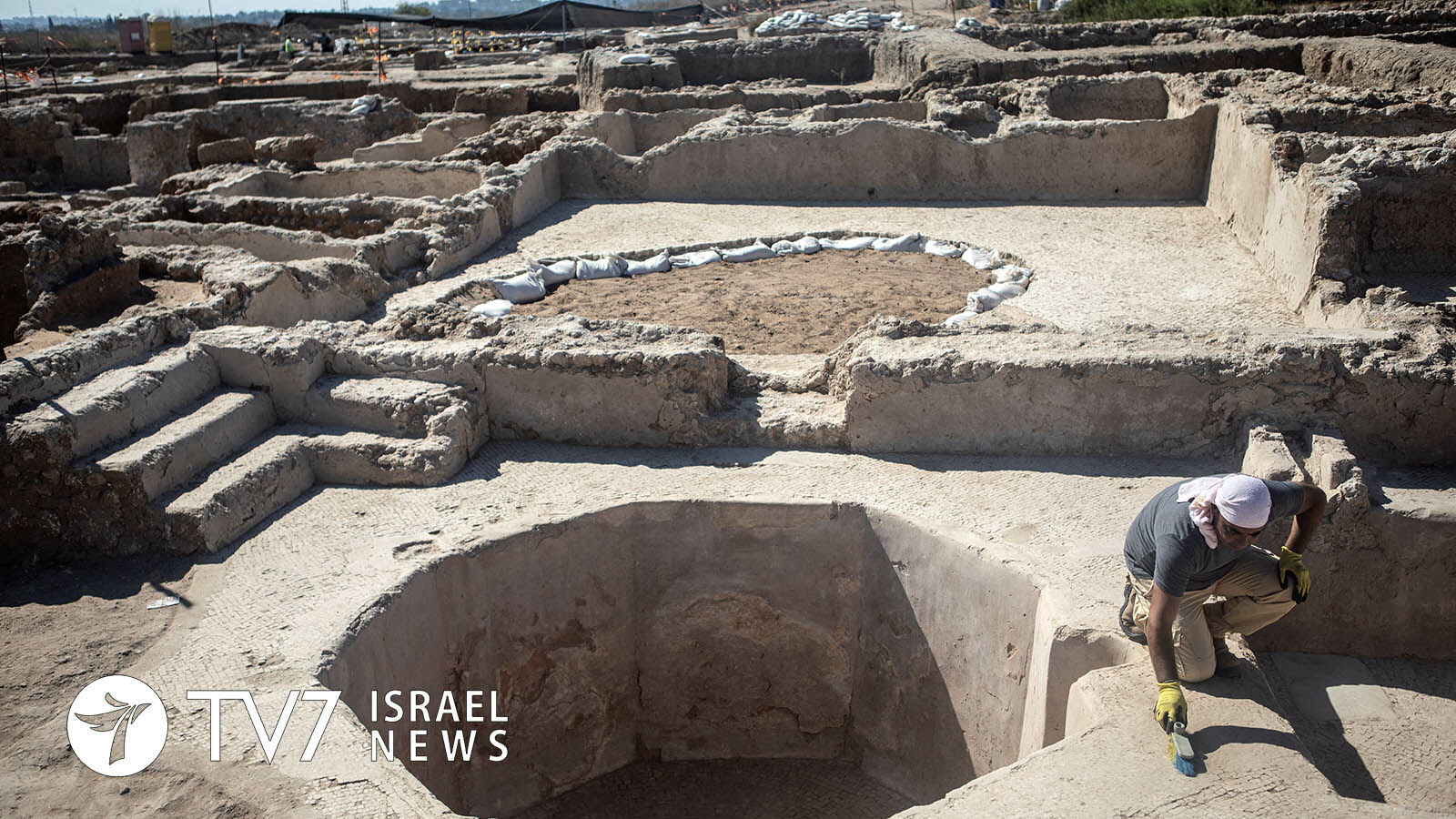A massive wine factory with the largest complex of winepresses known in the world from the Byzantine Period has been unearthed in Yavne, deemed by the Israel Antiquities Authority (IAA) as “An Archaeological Sensation.”
By Erin Viner
The factory the size of a modern-day football field shows how vintners met demand for high quality white wine popular throughout the ancient world by producing about 2 million liters (530,000 gallons) a year.
The complex was unearthed in the city of Yavne, about 30 kilometers (18 miles) south of Tel Aviv, during archeological excavations over the past 2 years conducted by the IAA as part of the development of the city at the initiative of the Israel Land Authority (ILA).
The “world wine powerhouse” is “a huge and well-designed industrial estate” with “5 magnificent wine presses” covering an area of about 225 square meters, according to an IAA press release obtained by TV7.
“We were surprised to discover a sophisticated factory here, which was used to produce wine in commercial quantities,” remarked Dr. Elie Haddad, Liat Nadav-Ziv and Dr. Jon Seligman, who directed the excavation on behalf of the IAA, adding that “decorative niches in the shape of a conch, which adorned the winepresses, indicate the great wealth of the factory owners.”
“We should remember that the whole process was conducted manually,” they noted.
The stone structures are so well preserved that it is easy to visualize the winemaking process – from the platform where piles of grapes split open under their own weight to the treading floor where the grapes were crushed barefoot, with enormous octagonal shaped vats nearby for the collection and fermentation process, and four large warehouses for aging and marketing the wine.
Dozens of tall earthen jugs able to hold up to 25 liters (6.6 gallons) made in large onsite kilns were also found, along with tens of thousands of fragments. These were known as “Gaza jars” after the nearby port from which they were shipped abroad, said the excavation team. The discovery of these containers across Europe is evidence that the wine was in high demand.
“‘Gaza and Ashkelon Wine’ was considered a quality wine brand of the ancient world, whose reputation has spread far and wide, a bit like Jaffa oranges denote their origin and quality today from Israel,” say the archaeologists, explaining that the names derived from the ports through which they were shipped, and that even then, “everyone knew that this was a product from the Holy Land product, and everyone wanted more and more of this wine.”
When asked to speculate about the quality, Dr. Seligman said that ancient texts have described the beverage as a light white wine that was “agreeable to the taste.”
The archaeologists pointed out that according to the Mishna Torah code of Jewish religious law (Halacha) authored by Rabbi Moshe ben Maimon (known as Maimonides) between 1170 and 1180, Jewish leaders migrated to Yavne after the destruction of Jerusalem where they “lived in a vineyard and studied Torah,” and that “the excavation shows a continuum of existence of the wine industry at the site over many centuries of years.”
Ancient people frequently drank wine – even children – and used as either a “concentrate” to improve the taste of water or as a substitute if sterile drinking water was lacking.
“The impressive findings strengthen the recognition of the importance of the city of Yavne and its glorious past throughout history,” asserted the city’s Mayor Zvi Gov-Ari, who announced that the area will be preserved and made accessible to the public as part of an archeological park to be established as “a focal point for tourism and education in the future.”
IAA Director Eli Eskozido described the “mega-excavation” of the enormous complex by hundreds of workers, dozens of permanent staff and experts as “sacred work to bring unknown chapters of the country’s history to light” and further “connect the public to its heritage.”
In addition to the 1,500-year-old Byzantine wine factory, even older winepresses from the Persian period dating back some 2,300 years ago have also been discovered nearby.
